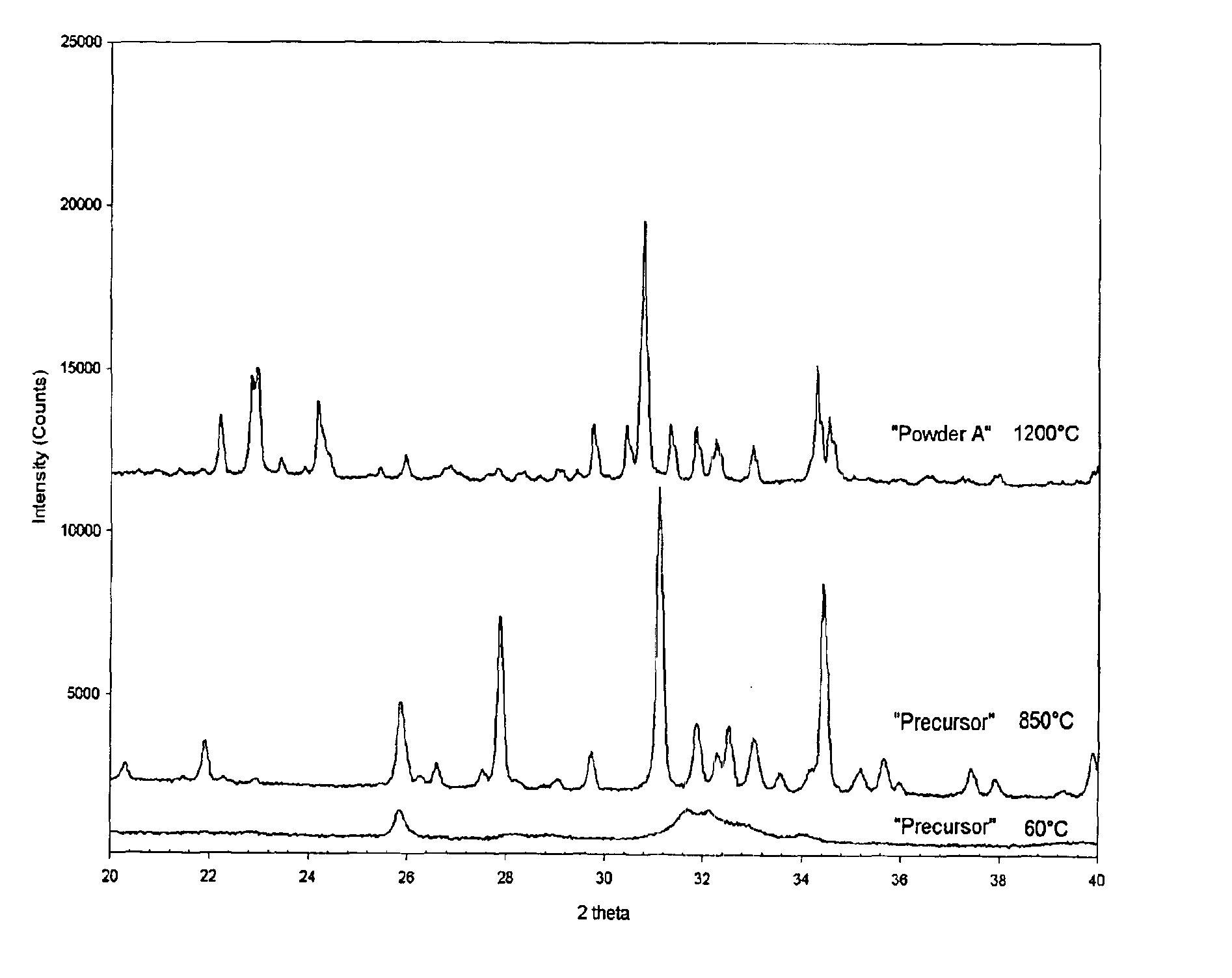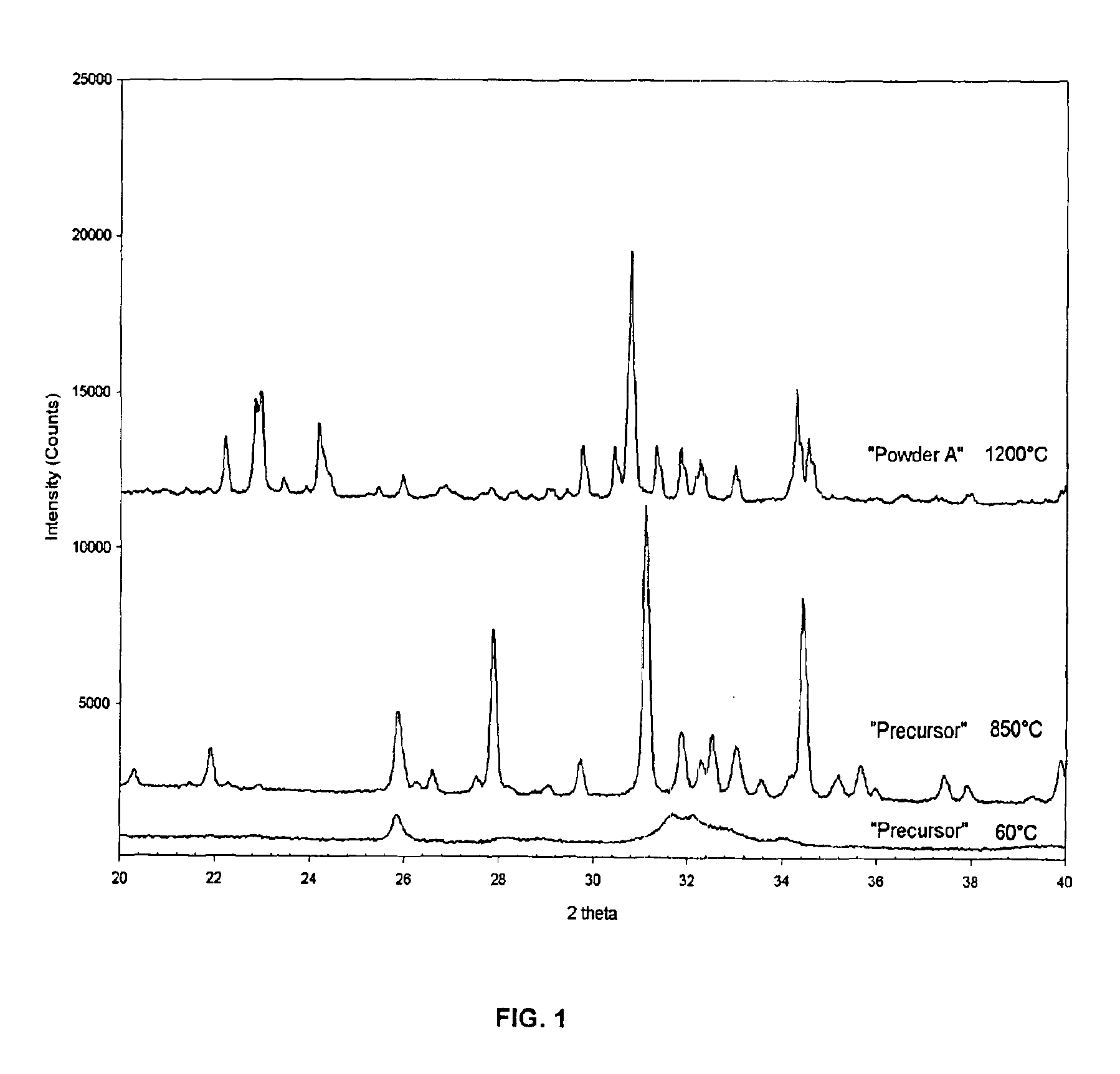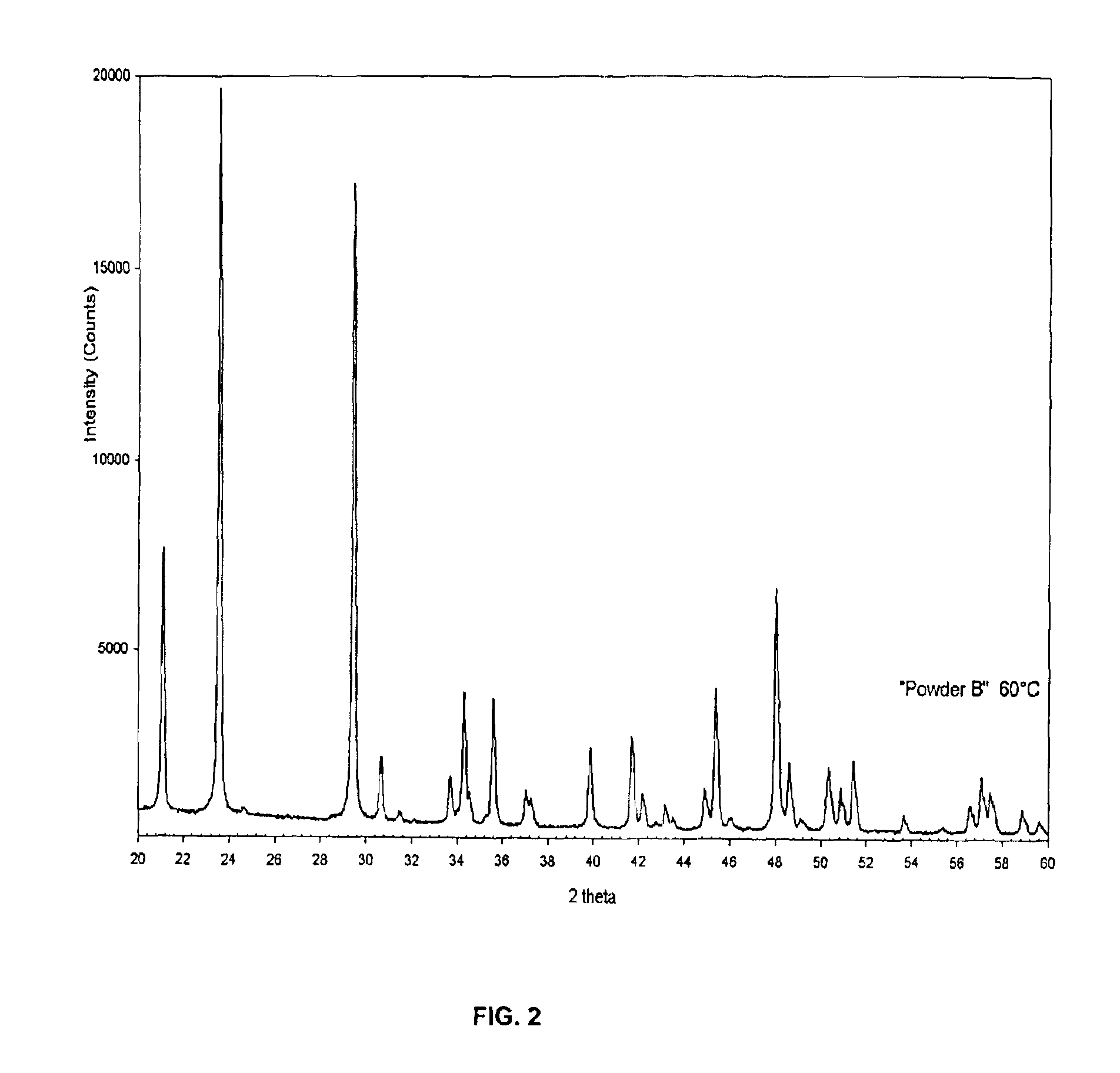Calcium phosphate cement composition and a method for the preparation thereof
a technology composition, which is applied in the field of calcium phosphate cement composition, can solve the problems of increasing the surface temperature of individual particles, limiting its use mainly to “non-load-bearing” places and applications, and undesirable mechanochemical reactions, and achieves high aqueous solubility
- Summary
- Abstract
- Description
- Claims
- Application Information
AI Technical Summary
Benefits of technology
Problems solved by technology
Method used
Image
Examples
example 1
Synthesis of Bi-phasic Alpha-TCP+HA Powders (Powder A):
[0041]51.53 g of (NH4)2HPO4 is dissolved in a glass beaker in 650 mL distilled H2O, preheated to 37° C., to form a clear solution (Solution A). In a separate glass beaker 139.35 g of Ca(NO3)2·4H2O is dissolved in 1000 mL of H2O, preheated to 37° C., to form solution B. Solution B is slowly (in 5 minutes) added into solution A under constant stirring. The temperature of the opaque solution is maintained at 37° C. The nominal Ca / P molar ratio in this solution is 1.512. A 33 mL aliquot of concentrated (i.e., 25 vol %) NH4OH is then added at once to the milky solution, and stirred for 2 hours at 37° C. Formed precipitates are then filtered out of the mother liquor, washed with 2 liters of distilled water, and followed by drying in an air atmosphere at 60° C. for 24 hours. The dried powders are later calcined in an inert Al2O3 bowl at 850° C for 12 hours in an air atmosphere. Formed powders are found to consist of 95wt % beta-TCP and...
example 2
Synthesis of Brushite (DCPD: CaHPO4·2H2O) Powders (Powder B):
[0043]2.0636 g of KH2PO4 are dissolved in a glass beaker containing 1750 mL of distilled water at room temperature to prepare a clear solution. 7.5324 g of Na2HPO4·2H2O is then added into this solution and mixed for 15 minutes. The pH value of the resultant solution is measured to be 7.4. 27.59 g of Ca(NO3)2·4H2O (in powder form) is then added at once into the solution B, and mixed at room temperature for 80 minutes. Formed precipitates are then filtered out of the mother solution, washed with 2 liters of distilled H2O, and dried at 60° C. for 24 hours. High crystallinity, single-phase DCPD (CaHPO4·2H2O) powders are obtained. Chemical analyses performed on these samples indicate the presence of 1.6 wt % Na and K, combined.
[0044]FIG. 2 shows the XRD data of the DCPD powders of extremely high crystallinity. These powders have a plate-like morphology (visible by SEM pictures, see, e.g., FIG. 5).
example 3
Preparation of the Cement Powders:
[0045]Powder A (75 wt %) and Powder B (25 wt %) are placed in a plastic bottle (no grinding balls in it), tightly sealed, and then placed in an automatic mill (Turbula-type) for 1 hour. The total amount of the powder in the bottle is 100 grams. Cement powder is ready after this milling. By mixing these two powders, the phase assemblage of the cement powder corresponds to 71.1 wt % alpha-TCP, 25.2 wt % DCPD, and 3.7 wt % HA, with the overall Ca / P molar ratio being equal to 1.39. FIG. 6 is an SEM picture depicting a dry cement powder after mixing Powders A and B.
PUM
| Property | Measurement | Unit |
|---|---|---|
| particle size | aaaaa | aaaaa |
| compressive strength | aaaaa | aaaaa |
| compressive strength | aaaaa | aaaaa |
Abstract
Description
Claims
Application Information
 Login to View More
Login to View More - R&D
- Intellectual Property
- Life Sciences
- Materials
- Tech Scout
- Unparalleled Data Quality
- Higher Quality Content
- 60% Fewer Hallucinations
Browse by: Latest US Patents, China's latest patents, Technical Efficacy Thesaurus, Application Domain, Technology Topic, Popular Technical Reports.
© 2025 PatSnap. All rights reserved.Legal|Privacy policy|Modern Slavery Act Transparency Statement|Sitemap|About US| Contact US: help@patsnap.com



